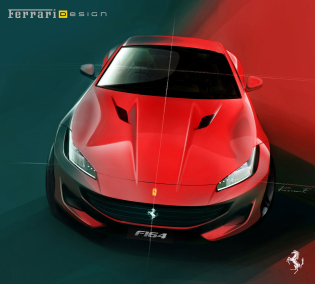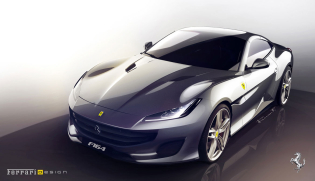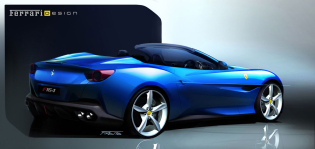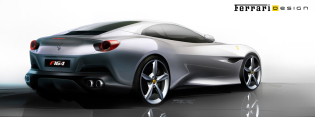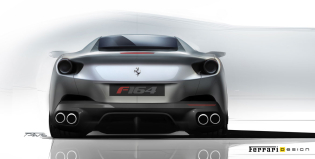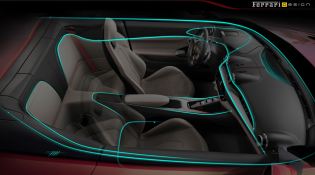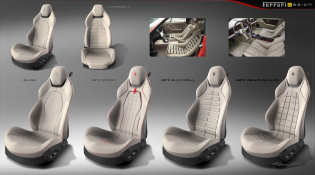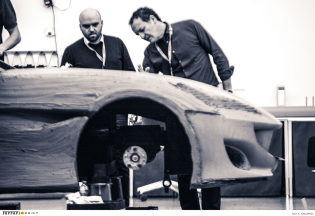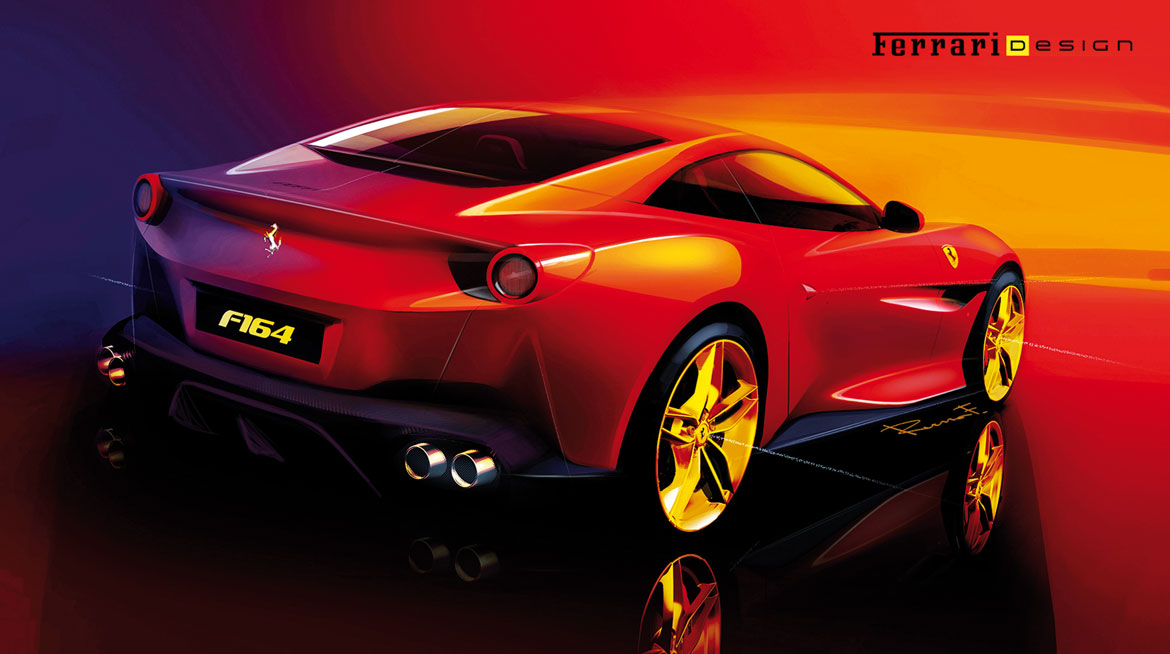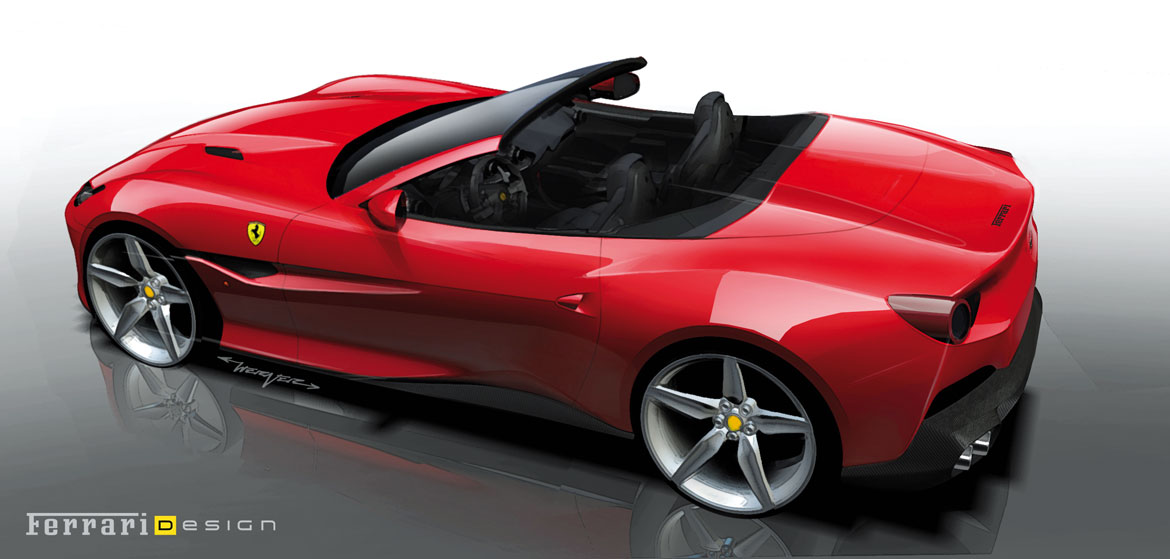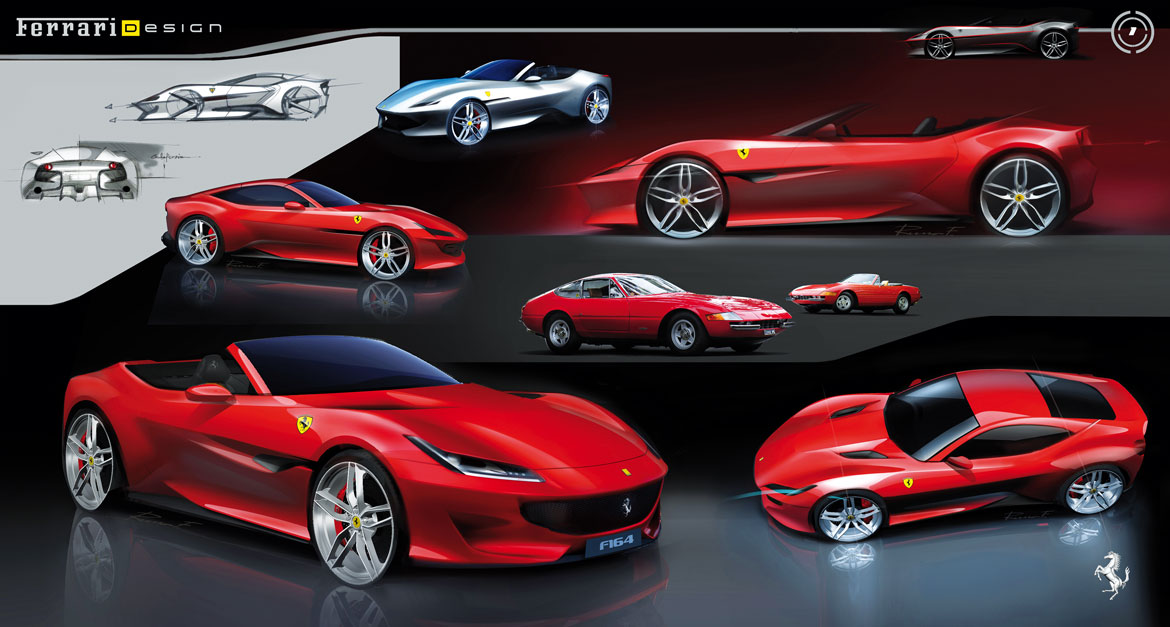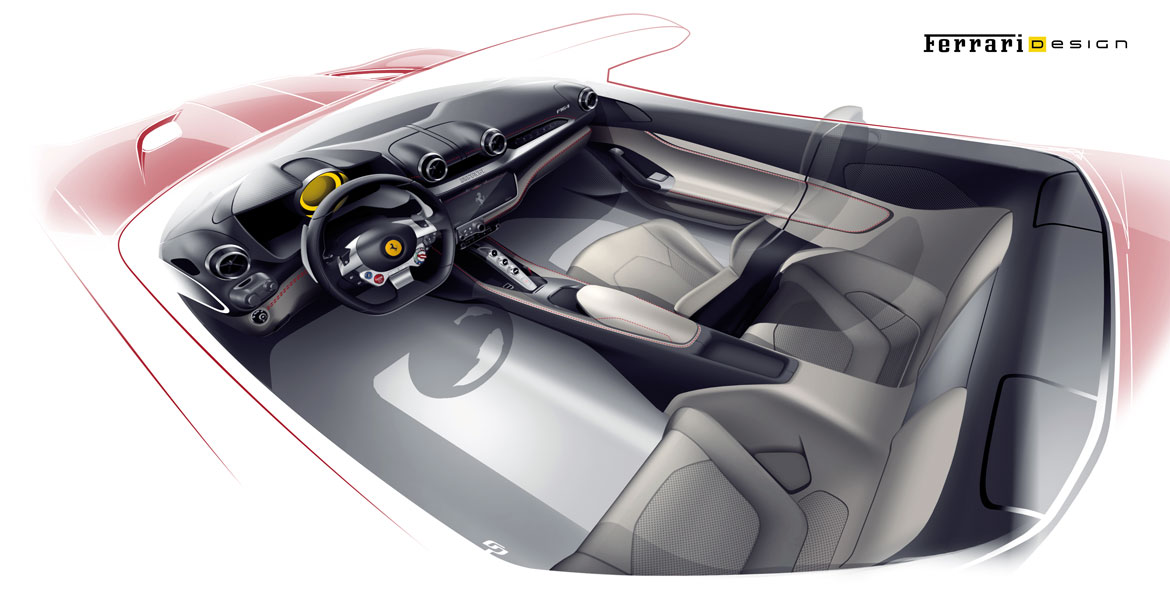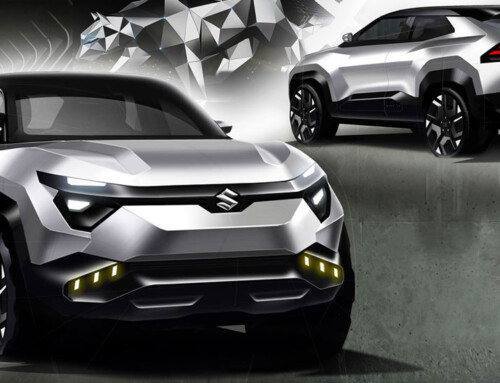It tips a wink to the California T, this Portofino that carries on its legacy; but in an even more modern, more efficient, perhaps even more Ferrari way. Maranello’s coupé-cabrio is totally renewed, from platform to styling: 80 kilos lighter thanks to the use of aluminium, 40 horsepower more powerful (the V8 engine now packs 600, enough to reach 100 kph in 3.5 seconds), but above all, as Flavio Manzoni points out, “there are no longer three but two boxes”. Not, for this type of granturismo, something of little account. Manzoni, who heads up the Ferrari Design Centre, explains that “the California’s proportions have remained intact, although the position of the windscreen is pushed slightly back, so the bonnet looks longer and the cockpit is bigger”. And then? “The badge”.
The key point, explains Manzoni, “was to make it look beautiful even with the roof closed, turning it into a real fastback, something that nobody has so far been able to achieve with this type of two-part retractable roof. Usually the roof panel is short and clumsy, the rear long and majestic. The roof line is now perfect. And when it is open two clearly visible boot spoilers lighten the profile”. That’s not all. Moving the rear light assemblies, which on the California T were inserted in the bonnet and are now faired into the wings, has given the tail “a longer line, meaning a much leaner, more athletic look”.
Federico Acuto, exterior designer, says: “The rear expression changes completely. It’s more elusive and lighter even though volumes remain big”. Another of the team’s exterior designers, Francesco Russo adds: “the California had a more classic style. We have tried with various elements to make it more attractive to young people. More gutsy. More aggressive”. One of those elements, which among other things contributes to increasing the downforce of the car while keeping the Cx down to 0.312, is the air curtain: two air intakes next to headlights of new design that – as the lead exterior designer Werner Gruber explains – “channel air from the front mudguards to the wheel arches, reducing drag”.
The passage of air along the side, he adds, completes the functionality of that particular styling cue. In fact, Manzoni intervenes, the Portofino is “full of aerodynamic mischief and tricks helping it achieve an excellent balance between Cx and downforce”. Like the wider rear spoiler, made possible by the new position of the lights “facilitated by intense work on the roof mechanisms that now move behind the lights rather than laterally”. Or like the careful study of the sides, in an interplay of concave and convex surfaces; or again the rear “trimaran”, where the centre keel is represented by the diffuser and the lateral ones by the two mudguards.
Launched in February 2015 with a series of sketches, Project F164 was developed stylistically over a period of 14 months in what Juan Manuel Lopez, head of exterior design, defines as “very healthy, constructive engagement among young talents. We worked in 3D from the start and milled three clay models that, through an inevitable cross-breeding of proposals, came to maturity very quickly”
According to Luca Casarini, head of interior design, an improvement in ergonomics and comfort was “the starting point for the cockpit”. Light and compact geometries, ample use of solutions already adopted on the GTC4 Lusso, careful use of colours and trim in collaboration with Stefania Zucchini, head of that sector. The architectural approach, explains Fabio Massari, lead interior design, develops more horizontally than in the GTC4, with a new infotainment system and a repositioning of the air inlets: “Lighten and recompact the volumes, trying to break down the dashboard to reduce the perception of its height”. Here, then, is a two-shell solution. But if the cabin is roomier, Roberto Mastruzzo, head of components, explains, it is due to the new magnesium front seat structure which saves as much as 50 millimetres and will also be adopted in future models. It is a new era, in Ferrari’s 70 years history.
Full article in Auto&Design no. 227
